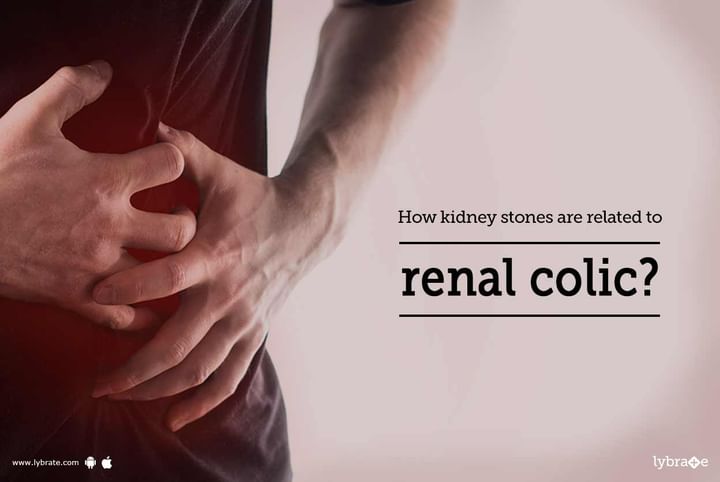How kidney stones are related to renal colic?
Kidneys act as blood filters, which constantly flush out toxins and excess minerals with water in the form of urine. Urine consists of many minerals which may lead to stone formation. When their balance is disturbed due to some disease, stones start forming. These stones often lead to abdominal pain which is referred to as renal colic.
Renal colic
Renal or ureteric colic is the term used for typical pain on one side of abdomen in flank region, starting from back and radiating forward towards lower abdomen up to scrotum. This is usually associated with nausea, vomiting and urinary discomfort. Patients may even notice blood in the urine.
How kidney stones are related to renal colic?
Kidney stones usually form inside the kidney and may stay there without causing any pain or discomfort. But whenever they are dislodged and stuck at mouth of kidney (pelvis) or anywhere in ureter, they block the passage of urine of that kidney. This causes swelling in kidney termed as hydronephrosis. This swelling in kidney causes renal / ureteric colic. This colic is a protective phenomenon and tries to push out the stones. Mostly, small stones may come out through urine by this natural process. However, large stones need some form of intervention to come out. Otherwise, they will harm the kidneys later in life.
Here are some symptoms of kidney stones along with renal colic -
-
Most stones which are lying in calyces of kidney are asymptomatic
-
Nausea and vomiting
-
Frequent urinary tract infections
-
Fever with chills
-
Foul smelling urine
-
Hesitancy, frequency and burning in urination
-
Blood in urine (urine with a reddish, pink or brownish hue)
-
Passage of small stones in urine
Renal colic and its treatment
Generally, the treatment of renal stones involves control of symptoms and stone removal.
-
Expectant treatment or medical expulsive therapy: Small stones of less than 4 mm size usually pass on their own and some medicines like alpha-blockers and steroid hasten up their expulsion. Medium size stones (4-6 mm), sometimes pass with help of these medications. But stones larger than 6 mm usually require intervention.
-
Lithotripsy: This method involves breaking the stones by shock waves into small dusty particles which pass through urine on its own. This is usually suitable for stones upto 1.5 cm and lying in kidneys. This is non-operative treatment which can be done on OPD or daycare basis.
-
Ureteroscopy (URS): This method involves entry of very thin semi-rigid scope through urethra into ureter. Stone is broken by LASER and removed.
-
Retrograde Intra Renal Surgery (RIRS): In this method very thin flexible scope is maneuvered through urethra into the upper ureter and pelvi-calyceal system of kidney. Stones in kidney or upper ureter are broken by LASER and removed.
-
Mini Percutaneous Nephrolithotomy (PCNL): This method is ideal for large renal stones. In this technique, a small hole is made into the kidney through back and tiny scope is entered into the kidney. Stones are broken by LASER and removed.


+1.svg)
